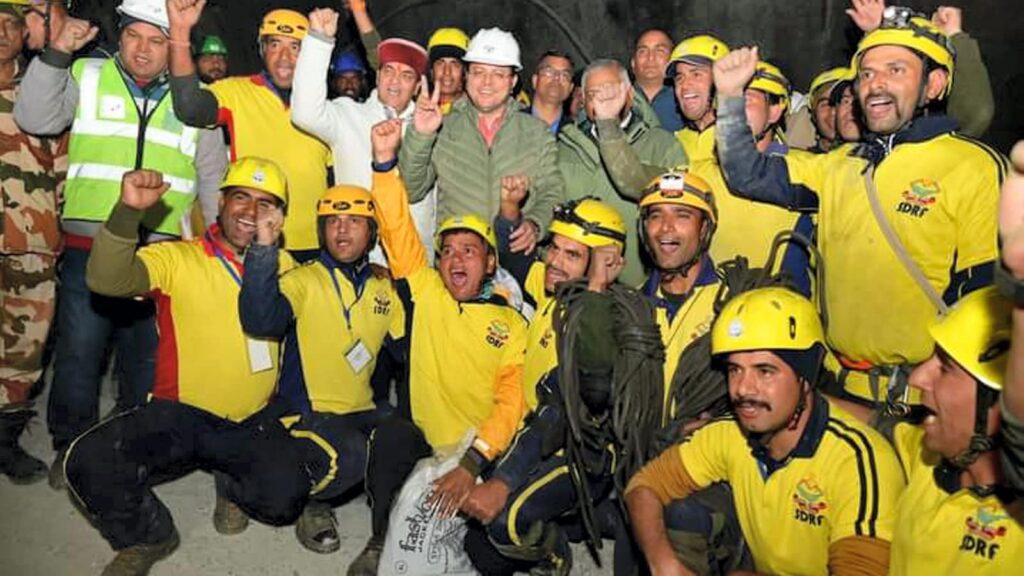The nation heaved a collective sigh of relief when the last of the 41 labourers trapped in an under-construction tunnel in the Himalayas near Uttarkashi, the roof of which had collapsed 17 days earlier, was rescued on Tuesday night. This great escape was a story of human endurance, grit and ingenuity with a group of 14 artisanal miners from Uttar Pradesh and Madhya Pradesh delivering the final rescue act after mighty machines had failed. The labourers who braved the weather and isolation in the two-km-long tunnel, the local population who supported the rescue operation, and finally, the personnel from multiple agencies involved in the rescue that tested both men and machines, deserve applause for their single-minded focus on staying the course and ensuring a happy ending to the operation.
A detailed probe is needed to figure out what went wrong with the tunnelling on this stretch of the 880-km Char Dham highway project. The construction works had been reportedly designed with the intent to bypass environment impact assessment, which meant there was no disaster management plan in place. Much of the construction of the mountain highways is subcontracted to private firms that work on tight deadlines and budgets. Perhaps, it is time the National Highways and Infrastructure Development Corporation Limited, mandated to develop infrastructure in the mountains, look beyond a managerial role and build the technical expertise to build and operate the hill highways.
The disaster and rescue should also be a moment to pause and reassess the development of the Himalayan region, especially mega projects, railway lines beyond Rishikesh, and hydroelectric projects under construction. The reckless search for convenience, speed, and comforts associated with travel in the plains, at Himalayan altitudes is bound to be disastrous. The Himalayas are a major site of climate crisis-triggered disasters, with glaciers receding and unusual rainfall patterns observed. Devastating landslides, flash floods and subsidence (Joshimath) are now more frequent in Uttarakhand, Himachal Pradesh and Sikkim. Any disaster in this great watershed of the Ganga, Yamuna, and Brahmaputra will surely have a cascading impact on our water supplies and food security. The Himalayas call for a different imagination of development and extremely sensitive policy interventions. It is in the national interest that there is an environmental audit of all the ongoing big projects in the Himalayas.
Continue reading with HT Premium Subscription
Daily E Paper I Premium Articles I Brunch E Magazine I Daily Infographics


